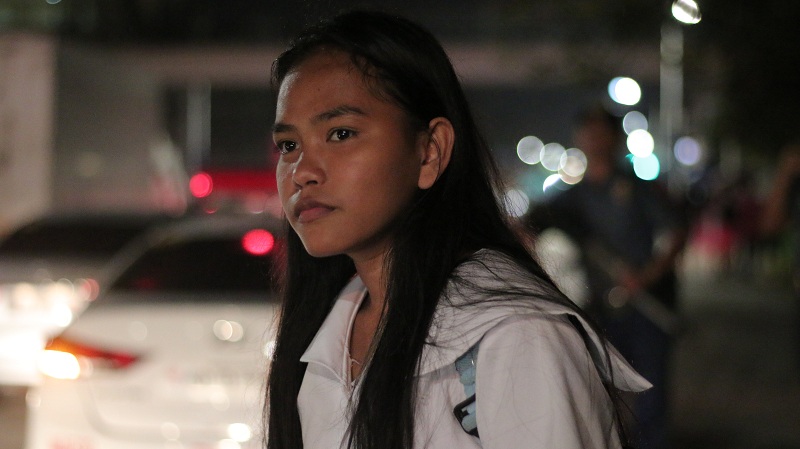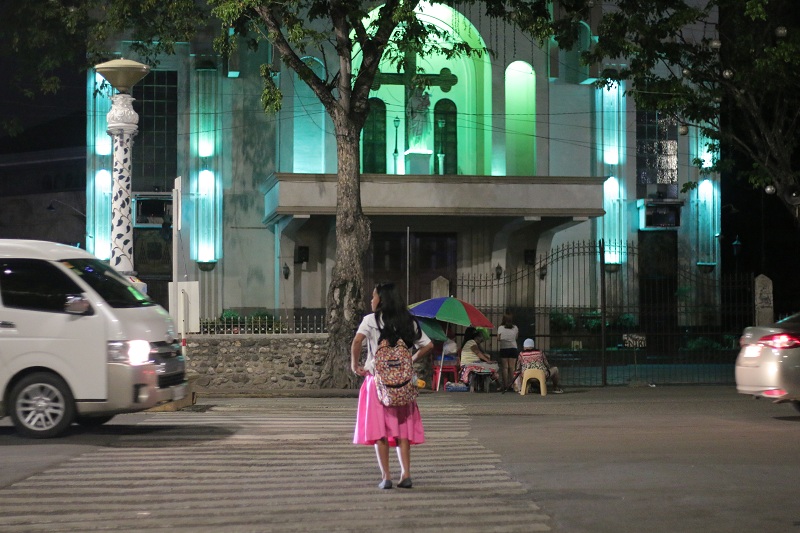The plight of a night schooler
Gerian, 17 years old, watched her classmates exit the classroom. She was supposed to join them going home but as part of the assigned cleaner group that night, she needed to stay longer.
It was almost 10 in the evening when the group finished cleaning the classroom. She checked her faulty phone, its battery was drained. “My mother and sister would be terribly worried right now,” she thought.
The 10-grade student hurriedly walked past her classmates and made her way to the school gate. A long, poorly lit road greeted her outside the gate. Unhesitatingly, she walked towards it because there was no other choice.
The sound of her schoolmates chatter and the light of a busy street ahead of her somehow gave her comfort.
She took a right turn as she arrived the main street. She walked with the crowd – mostly were her schoolmates.

“This is for a good reason,” Gerian reminded herself. She intentionally enrolled in a public high school night class so she can work for her school allowance.
She takes advantage of her free time during the day by helping her sister sell fish in a public market, which she earns P120 per stint, or she sells delicacies in her school from 6:00 AM to 2:00 PM – giving her two and a half hours to rest before the start of her night class at 4:30 PM.
Growing up in a poor neighborhood, the teenager understands that she needs to study hard so she can have a better future. Her mother, Genara, couldn’t afford to provide her daughter’s school needs with her meager income from her small sari-sari (variety) store. Everyday, the family missed the head of the family who already passed away 5 years ago.
After walking for several minutes, Gerian arrived at the park. This is the place she hated to pass because of a traumatic experience. At around the same time a couple months ago, she was walking alone when she was caught in a brawl between a two groups of teenagers who were allegedly gang members. She managed to escape the rock-throwing and knuckle-punching but the fear never left her since then.
Thank God this night was different. Only a bunch of her schoolmates practicing their group presentation occupied the park.

Next to the park is her favorite place – the church. Every night, she makes sure to light a candle outside the church’s gate and offer a prayer.
“I pray to God to give mestrength and inspiration to continue my studies even though my situation is hard,” Gerian shared. “I also pray to HIm that I may be able to reach my dream as a teacher someday.”
After praying, she resumed walking and passed by a row of streetfood stalls. Her stomach rumbled momentarily but she knew better to save her allowance for future school expenses. She also knew that her mother has kept dinner for her.
Gerian arrived in an opening of a dim and narrow passage. She needed to go a couple of these passages before she will arrive to her destination. “I’m not afraid of this place. This is my neighborhood. I am close to home.”
—
Gerian is just one of the many high school students of the night class who walk to their home late at night. These teenagers, especially the females, are vulnerable to unwanted danger.
Some public high school in the Philippines adapt the triple-class shift, which are the morning shift (6AM-12AM), afternoon shift (1PM-4PM), and night shift (4:30PM-9PM), to address student overpopulation or to cater students who are working at daytime.
World Vision is concerned to the welfare of students who are exposed to danger at night.









